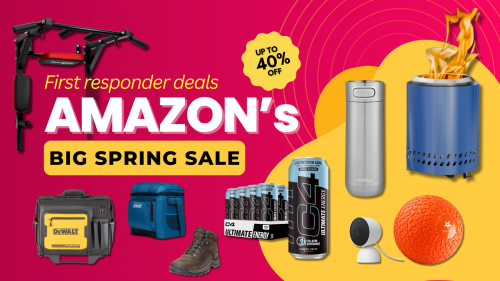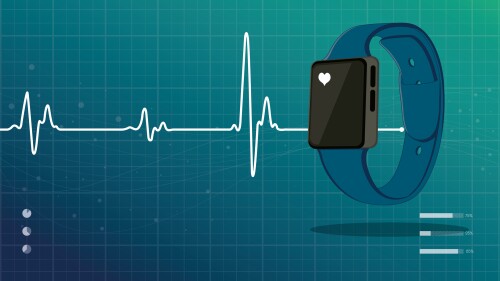Shooting well requires a stable platform — and that begins with your shooting stance. A stable platform includes your stance, body posture, weight bias, grip, grip pressure, and anything else used to minimize movement and stabilize the weapon system during firing. Whether you’re engaging targets from a stationary position or shooting on the move, the quality of your stance is often the difference between making a solid hit and missing your mark.
The best way to start improving your stance is by training with an exceptional firearms instructor and following it up with consistent, focused practice. There’s no substitute for skill development through repetition, but the right gear can help reinforce a proper shooting stance and support your training efforts.
Below, we’ll explore some essential equipment that can give you a noticeable edge as you work on how to improve your stance and overall shooting platform.
Gear and apparel to help stabilize your shooting platform
An often-overlooked part of building a stable shooting platform is the gear we wear and rely on. If we aren’t comfortable during training, we tend to focus more on the discomfort than on improving our shooting stance or refining technique. The right gear allows you to focus fully on your fundamentals without distraction — and can support better accuracy, faster follow-ups, and greater endurance on the range.
Footwear
Footwear plays a critical role in stabilizing your shooting stance. We need footwear with good traction and stability to support the weight of our equipment and protect our feet. At the same time, our footwear needs to be light enough to keep us quick and nimble on our feet when moving.
Gloves
Good gloves to protect your hands may also be something to consider. During long training sessions, gloves can help prevent sore spots, blisters, burns from silencers, or cuts to your hands and fingers from sharp edges especially around the bottom of trigger guards. In addition to the protection they offer, many officers wear gloves during cold weather but fail to train with them on the range. Get a set of quality gloves and wear them during training.
Belts and pouches
Our duty gear also needs to support the weight of our equipment while holding our holsters and pouches securely in place during training. Belts that distribute the weight evenly and are rigid enough to provide the support we need aren’t nice to have; they are a need to have. The pouches on our belts should be secured in place with little to no movement so they don’t move around unexpectedly or interfere with drawing from the holster or reloading.
Hearing protection
When was the last time you considered replacing your ear protection? If you’re using generic ear pro, then you may not be getting the hearing protection you need. Too many shooters fight their ear protection when shooting rifles or shotguns because they struggle to get a solid cheek weld on the stock. Sometimes the result is bad marksmanship and maybe some discomfort, but too frequently, the result is a shot fired when the ear cups aren’t in position increasing the risk of irreversible hearing damage. Electronic earmuffs and custom-fit earplugs make for a great combination that offers two-layers of protection.

Good hearing protection starts with fit, and these custom-fit earplugs from Tactical Hearing are a notable example of premium protection that doesn’t interfere with a rifle stock.
Photo/Todd Fletcher
Fitness tools
When it comes to working on your shooting platform, don’t overlook the fitness side of the equation. Balance boards and stability balls are great for improving balance and core strength, both of which directly affect your ability to maintain a solid stance during extended training or high-stress shooting scenarios.
Resistance bands are another solid addition. During a recent Patrol Rifle Instructor Certification class we taught, an officer from Texas gave a classroom presentation on using resistance bands. He pointed out that because they’re lightweight and compact, he takes them on the road and uses them during breaks for a quick but effective workout. Brilliant idea — and a smart way to support your body mechanics for a stronger, more stable shooting platform.
Dry fire training systems
I’m a huge fan of dry fire training, and the products available today that can help improve your shooting stance and shooting platform are amazing. It may seem strange that dry fire training — without the effect of recoil — can help stabilize your shooting platform, but it’s actually the best way to get in a high volume of quality reps. Aside from traditional dry fire drills, today’s systems offer immediate feedback so you can be sure you’re practicing the right things, not just reinforcing bad habits.
Products like MantisX, ACE Virtual Reality, or Laser Shot provide real-time performance feedback, letting you fine-tune your shooting platform, grip and trigger control without using live ammo. In many cases, the feedback you get from these dry fire training systems is more precise than what you might get from a live instructor. These tools won’t sugarcoat your performance or try to protect your ego — they’re just there to make you better.
Unlike too many instructors who stay static in their methods, these systems are constantly improving. With regular updates, they offer a training experience that stays challenging, relevant and tailored to improving your core fundamentals, especially your shooting stance and platform.
Firearm accessories
This is the category many officers jump to — looking for a gadget to fix poor technique. I’m sorry to inform you, it doesn’t work that way. Comfortable, functional outerwear and proper training need to come first because they provide the real foundation for a stable shooting platform. Without a solid base, even the best gear won’t fix performance issues rooted in posture, stance, or fundamentals.
That being said, there are a few tools worth considering that can offer an edge once your platform is squared away.
A quality rifle sling: For your patrol rifle, a quality sling is a must. Think of a sling like a holster is for your handgun — it secures your rifle when not in use, keeps it ready at a moment’s notice, and helps reduce fatigue when transitioning between tasks. When you’re actively running your rifle, a properly fitted sling can do more than just keep it out of the way, it can actively assist with stabilizing your shooting stance, especially when shooting on the move or from awkward or unsupported positions. The tension created by a good sling setup can help steady your rifle, reduce wobble and increase your overall shooting effectiveness.

This sling from Sly Tactical is a top tier example of a properly fit and adjusted sling to help stabilize your patrol rifle.
Photo/Todd Fletcher
Rifle and pistol attachments: Depending on your operational environment and circumstances, a stabilizing attachment like a bipod or hand stop on your patrol rifle can be a bonus. For most officers, a bipod adds unnecessary weight and bulk. But for others, particularly those working in rural areas where long-range engagements are a legitimate possibility, a bipod can offer a solid shooting platform and increased shooting stability. Officers assigned to designated marksman or perimeter overwatch roles should also consider a bipod for situations requiring precision shooting and consistent prone positioning.
Aftermarket magwells: When it comes to your pistol, adding an aftermarket magwell can do more than speed up magazine changes — it can also enhance your grip stability. A properly designed magwell naturally drives your hand higher on the backstrap, promoting a tight, high grip and a more consistent grip index every time you draw from the holster. That kind of repeatable grip can make a big difference in improving your shooting stance and maintaining control under stress.

An aftermarket magwell and extended magazine basepads like these from Springer Precision can improve your grip on the pistol and magazines.
Photos/Todd Fletcher
Magazine basepads: If you’re adding a magwell, don’t overlook your magazine basepads. Standard basepads often won’t seat properly with an enlarged magwell. Swapping them out for extended basepads not only ensures compatibility but can also give you added benefits — like increased round capacity and more surface area to grip when drawing from your mag pouch. Whether you’re focused on faster reloads or better dexterity under pressure, the right basepads can round out your gear setup and help you maintain a more efficient shooting platform.
You can’t buy your way out of poor fundamentals, but you can equip yourself to train smarter. By combining sound instruction with gear that reinforces a stable shooting platform, you’ll set yourself up for better accuracy, faster follow-ups and more consistent performance under pressure. From dry fire systems to rifle slings and pistol upgrades, the tools are out there to help you take your stance — and your shooting — to the next level.
Related topics
- Best shooting stance for police officers
- Dry fire drills for improving marksmanship
- Must-have gear for patrol rifle setup
NEXT: Discover how dynamic tactical firearms drills that integrate problem-solving improve police officers’ response times, accuracy and outcomes in high-stakes gunfights:




















































